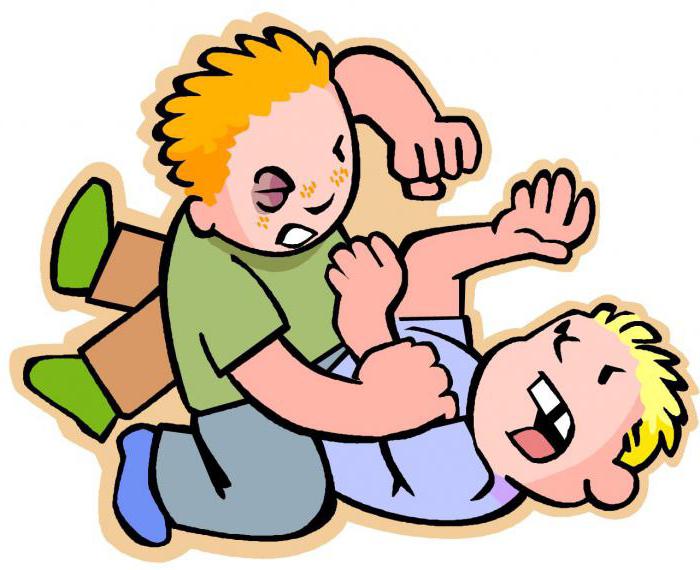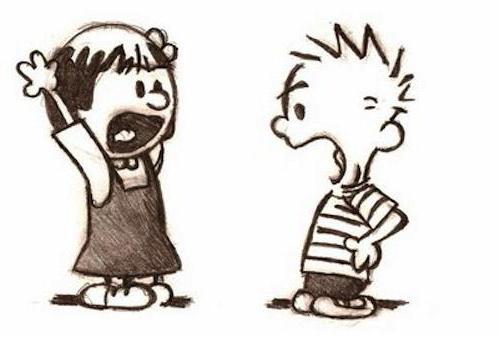The object of conflict is a situation or subject about which disagreements arise between individuals. It can be both spiritual and material values, ideology and so on.
What is a conflict
Conflict is an aggravated phase of resolving contradictions, which is most often accompanied by the emergence of a negative emotional background. In everyday life, a word such as a quarrel is more common. It is worth noting that conflict is an object of study of special science, conflict management.
Speaking of signs, it is worth noting the following:
- bipolarity (that is, the presence of two or more opposite positions);
- activity (physical or emotional that is caused by a nerve impulse);
- the presence of actors (parties that enter into a conflict situation, give it development and can be its direct source).
Modern science identifies several strategies that determine behavior in a controversial situation, namely:
- the weaker side tends to adapt and agree with the opponent;
- quite often, potential parties to the conflict seek to avoid aggravation of the situation;
- compromise involves finding a solution that will, to one degree or another, suit both parties;
- active confrontation, which is characterized by a categorical unwillingness to make concessions;
- mutually beneficial cooperation, allowing without loss to get out of a conflict situation.

Subject and object of conflict
It is important to understand that no conflict arises for no reason. If we talk about his subject, then these are all sorts of material and spiritual values, as well as human needs, which require satisfaction. Thus, we are talking about those categories around which confrontation arises.
The concept of the object of conflict is that it is a certain resource around which a confrontation arose. There are a number of differences between the two categories:
- The object of the conflict is real objects or circumstances, while the object is the disagreement between the parties to the controversial situation.
- Unlike an object that can be abstract in nature, an object always refers to objective reality.
- The object of conflict can be hidden, but its subject is on the surface.

Types of Conflict
Taking into account the subject and object of the conflict, we can distinguish the following typology:
- false - a contradiction arises when there are no significant reasons for this;
- potential - despite the presence of factors contributing to the conflict, it has not yet flared up, as the situation is not fully understood by the actors;
- true - really arose between specific individuals or social groups;
- random - caused by an unforeseen set of circumstances;
- biased - characterized by the fact that the true cause remains unknown, while the confrontation develops around a false factor;
- incorrectly attributed conflict - this is a situation where the instigator remains on the sidelines, and absolutely strangers are involved.

Main characteristics
The object of conflict has the following distinctive features:
- arises in parallel with interest from the warring parties, which manifests itself in the desire for possession, control, use, and so on;
- many objects of conflict are unchanged over the course of history (these are land and other resources, as well as influence and power);
- Assessment of significance is subjective and depends on the individual characteristics of the parties to the conflict.
The severity of the confrontation largely depends on the type of objects.So, they can be:
- indivisible, the possession or management of which cannot be joint;
- those that can be jointly owned;
- divided in certain proportions between the parties to the conflict.

Political conflict
Political conflict is a clash of ruling actors who are interested in realizing certain goals related to obtaining a certain amount of power and public status. It is worth noting that influence in this case is not the goal itself, but only a mechanism for further activities to meet social needs.
The object of political conflict is state power and authority of certain groups, as well as ideological values. If we talk about the reasons, then they can be of the following nature:
- dissatisfaction with the activities or position of senior management;
- social tensions caused by low living standards;
- ill-conceived policy, which is accompanied by the adoption of hasty decisions;
- the conflict of personal interests of a high official and public opinion;
- the mismatch of the positions of individual social groups;
- personal ambitions to achieve a certain degree of influence;
- contradictions having racial as well as national subtext.
Conflict of interest
It represents the desire of the warring parties to maintain a particular line of behavior, as well as socio-economic views. This is a consequence of the action of stimuli that are the result of human relationships. This is precisely what constitutes an object of conflict of interest.
The subject of interest is not a blessing as such, but a person’s personal position, which determines the attitude to certain categories. Most often we can talk about social status which provides certain features. It is important to understand that a conflict can arise around the interests of not only a specific person, but also entire social groups.

Social conflict
It represents the emergence of opposition between individual social structures and groups. Moreover, their interests are oppositely directed. Thus, the object of social conflict is a definite goal of public importance.
Similar contradictions are classified as follows:
- According to the number of participants:
- internal opposition;
- between individuals;
- with the participation of two or more social groups.
- Towards:
- horizontal (between equal participants);
- vertical (with the participation of superiors and subordinates).
- According to the source:
- caused by objective conditions prevailing in society;
- associated with the subjective characteristics and worldviews of specific individuals.
- By duration:
- short-term - end quickly, as soon as the parties come to an understanding;
- protracted - characterized by the presence of complex subtext.
- In accordance with the spheres of public life:
- on the basis of economic processes;
- related to the features of the organization of production;
- political confrontations;
- conflicts on the basis of ethnic differences;
- domestic disputes;
- other.

initial stage
It is worth noting that the development of the confrontation is gradual. The initial stage of the conflict is characterized by a steady increase in tension between potential warring parties. In this case, the object of conflict is the opposite of interests, which is still not fully understood.
A gradual increase in tension is caused by the following objective reasons:
- infringement of interests or disrespect and intolerance to the position of a particular person or group;
- painful or inadequate response to changes that occur in the social environment;
- Incorrect or distorted presentation of situation information.
The pre-conflict stage passes through three main phases in its development:
- the emergence of a contradiction that provokes the emergence of an atmosphere of mistrust;
- attempts to defend one’s own position, not trying to understand the opponent;
- growth of tension and aggression.
It is the pre-conflict stage that determines the further development of the situation. The best option is to smooth out the contradictions or consciously avoid them. There is also the option of moving to an open confrontation.
Conflict development
This process takes place in three stages:
- gradual confrontation from latent to open form with a demonstration of the impact of each of the parties (at the moment there is an opportunity to extinguish tension);
- the escalation stage involves finding new resources to demonstrate their strength and prove right (the situation begins to get out of control, and therefore the elimination of the conflict is almost impossible);
- open confrontation using all available resources (often in this phase it no longer touches the original cause, but goes into the personal plane).

Resolution
The final stage of the conflict is characterized by the gradual extinction of the confrontation. In this case, there may be several options for the development of events:
- getting one of the parties a significant advantage, which allows you to suppress the opponent and convince him of his innocence;
- complete defeat of one of the parties to the conflict;
- in view of the equal distribution of forces between the parties, the confrontation between them may drag on for an indefinite period;
- concessions and compromise due to the impossibility of identifying the winner in a controversial situation;
- the intervention of a third force that can extinguish the confrontation.
findings
The object of conflict is a certain category around which a confrontation arises between individuals. Moreover, the confrontation itself should be characterized by such signs as bipolarity (the presence of a contradiction), activity and participation of several subjects. Only in this case, the situation has the right to be called a conflict. Moreover, it is not at all necessary to enter into open confrontation. The parties may compromise or evade the dispute. Also, a weaker participant may submit.
Conflict situations are subject to different types. So, a false confrontation arises without significant reasons, but a true conflict has not only a specific reason, but also specific participants. If we are talking about a potential dispute, then at the moment there are all the prerequisites for it, but the situation itself has not yet received proper development. The displacement of the conflict occurs as a result of a false pretext, but the true reason remains unknown. Also quite common is the situation when outsiders are involved in the confrontation, and the culprit is watching from the side.
The object of conflict is decisive not only in character, but also in the outcome of the confrontation. So, it can be indivisible (whole), because of which the most acute confrontations arise. It is also perfectly acceptable to have such an object that can be shared. In this case, a compromise and a number of concessions are real. Another category of objects are those that can be divided in certain proportions between all parties to the conflict.
